- Tutorials
- Stances ( 서기 sogi )
- Two Fist Ready Stance ( 두주먹허리준비 dujumeok-heori-junbi )
Taekwondo 태권도Taekwondo Preschool
When you reach senior belt you are expected to guide the junior belts when they are beginning Taekwondo such as showing by example. To advance from one rank to the next, students typically complete promotion tests in which they demonstrate their proficiency in the various aspects of the art before a panel of judges or their teacher. View Taekwondo belt levels »

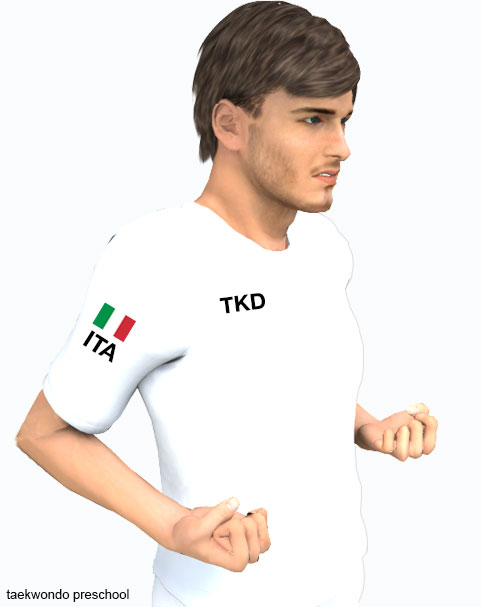
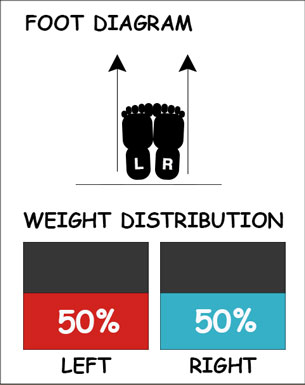


Two Fist Ready Stance
두주먹허리준비 dujumeok-heori-junbi
Difficulty Level: Beginner Level Technique: Stance ( 서기 sogi )
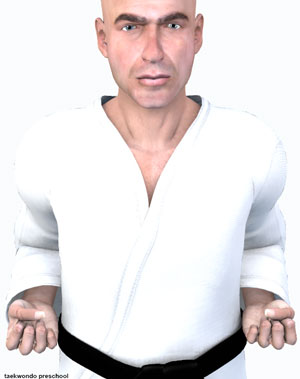
The Two Fist Ready Stance ( 두주먹허리준비 dujumeok-heori-junbi ) has both hands making a fist ( 주먹 jumeok ) placed on the side of the waist. From this stance ( 서기 sogi ) you are awaiting further instructions from the Master Instructor ( 사범님 sabeomnim ) and is most commonly used in demonstration activities due to its presentation and the state of being fully prepared at all times.
In the Korean martial art taekwondo, this beginner stance ( 서기 sogi ) is a form of Ready Posture ( 준비자세 junbi-jase ). Remember that junbi is to gather your spirit and power in a short time.
To promote taekwondo for its emphasis on high kicking and fast hand techniques, taekwondo schools perform at tournaments, community events, shopping malls, parks, and tv shows. Demonstrations vary from school to school, but may include such elements as the execution of poomse ( 품새 poomse ), which combine various techniques in specific sequences; the breaking of boards to demonstrate the ability to use techniques with both power and control; sparring ( 겨루기 gyeorugi ) and self-defense ( 호신술 hosinsool ) to demonstrate the practical application and control of techniques; physical fitness usually with push-ups and sit-ups.
The Two Fist Ready Stance ( 두주먹허리준비 dujumeok-heori-junbi ) is performed in an upright standing position with the legs side by side, keep both legs straight, heels touching, toes facing straight forward. The center of gravity is evenly distributed to both legs at 50/50 ratio.
A competitor's presence on the mat must be as credible as their technique. Self belief, confidence in abilities, and intention to perform to a personal best are tangible virtues considered indispensable in taekwondo practitioners.
Training Methods
How well one improves with training depends on several factors, such as the frequency it is engaged in, and the type of feedback that is available for improvement. If a student does not train often enough, reinforcement fades, and he or she is likely to forget what was learned.
When learning the stance ( 서기 sogi ), it is helpful to use a mirror to observe your stance ( 서기 sogi ) posture and fix your mistakes immediately. Initially, a student may need focused feedback from a certified Master Instructor ( 사범님 sabeomnim ); however, as they progress, they must develop the ability to self-assess the stance ( 서기 sogi ).
Minimum Level Requirement: White Belt (10th geup)
Difficulty of Technique
Taekwondo students of geup ranking learn the most basic techniques first, and then move on to more advanced and difficult techniques as they approach 1st Dan Black Belt. The more difficult the technique, the more practice may be needed for the purpose of improving or mastering it, as in the phrase 'practice makes perfect'. Every technique must display the requisite speed, balance, power and firmness to be realistically used as an attack or defense move.
* Please see a certified Master Instructor ( 사범님 sabeomnim ) for training. Proper guidance and instructions are needed to ensure safe training.
Promotion Tests
Students often undergo periodic testing and grading by their own Master Instructor ( 사범님 sabeomnim ) in order to advance to a higher level of recognized achievement such as a different belt color. They need to demonstrate their proficiency in the various aspects of the art such as the execution of patterns ( 품새 poomse ), which combine various techniques in specific sequences.
Ready Stance ( 기본준비 junbi ) is a requirement for the below belt levels (Techniques vary between schools). Promotion from one belt level to the next can proceed rapidly in some schools, since schools often allow geup promotions every two, three, or four months. Students of geup rank learn the most basic techniques first, and then move on to more advanced techniques as they approach first dan black belt. View Promotion Tests »
Advertisement


Did you know?
Impact Surface Area
Various surfaces of the body may be engaged as the blocking and striking surface depending on which area of the body is being targeted. This leads to a large array of blocking and striking positions. More information on Impact Surface Areas »
| Surface | Korean | Description | Tutorial | |
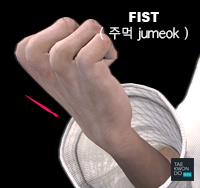 |
Fist ( 주먹 jumeok ) - is an action where a hand has the fingers curled into the palm and the thumb retracted, displaying the knuckles. |
주먹 jumeok | A fist ( 주먹 jumeok ) is an action where a hand has the fingers curled into the palm and the thumb retracted, displaying the knuckles. The act of creating a fist is known as 'making a fist' or 'clenching a fist'. | Tutorial » |
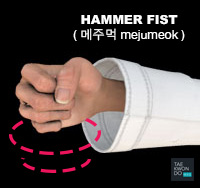 |
Hammer Fist ( 메주먹 mejumeok ) - is an action where a hand has the fingers curled into the palm and the thumb retracted, using the bottom of the hand as the striking surface. |
메주먹 mejumeok | A Hammer Fist is an action where a hand has the fingers curled into the palm and the thumb retracted, using the bottom of the hand as the striking surface. The act of creating a fist ( 주먹 jumeok ) is known as 'making a fist' or 'clenching a fist'. | Tutorial » |
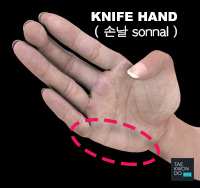 |
Hand Blade ( 손날 sonnal ) - striking surface extends with the muscle at the side of the hand located between the base of the small finger and the wrist. |
손날 sonnal | By tucking the thumb into the palm, a striking surface called the knife hand or hand blade ( 손날 sonnal ) is formed. The striking surface extends with the muscle at the side of the hand located between the base of the small finger and the wrist. | Tutorial » |
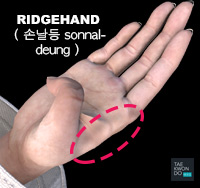 |
Ridgehand ( 손날등 sonnal-deung ) - reverse knife-hand is formed, extending a few inches along the inside of the hand below the first knuckle of the index finger. |
손날등 sonnal-deung | By tucking the thumb into the palm, a striking surface called the ridgehand ( 손날등 sonnal-deung ), or reverse knife-hand is formed, extending a few inches along the inside of the hand below the first knuckle of the index finger. | Tutorial » |
RESOURCES
This article uses material from the Wikipedia articles "Hand", "Fist (hand)", "Knife Hand", which is released under the Creative Commons Attribution-Share-Alike License 3.0.
Two Fist Ready Stance ( 두주먹허리준비 dujumeok-heori-junbi )
Footing Surface
Various surfaces of the foot may be engaged as the footing surface depending on which area of the body is being used. Proper footwork is used to enable the proper balancing of the body, to support combinations of strikes and launch strikes from the proper angle or distance. For more information on Impact Surface Areas »
( Click image for additional information)
Technique Injuries
Collisions with the ground, objects, and other taekwondo practitioners are common, and unexpected dynamic forces on limbs and joints can cause injury. Taekwondo injuries can also occur in techniques if done improperly or from overuse of a particular body part. Taking a break from training or reducing the volume and the intensity of the training will allow the body to recover. For more information on Injuries »
( Click image for additional information)
Common Mistakes when Performing the Technique
When performing the technique, there will be more mistakes as a beginner and as the practitioner advances through the rankings, they will have learned and improved from the past. How well one improves with training depends on several factors, such as the frequency it is engaged in, and the type of feedback that is available for improvement.
( Click image for additional information)

Training Highlights Summary
The Stance ( 서기 sogi ) contains many key point highlights. There are some that are simple and straightforward but then some are complex and detailed that require repeated training to learn and master.
- has both hands making a fist on the side of the waist
- keep both legs straight and toes pointing straight forward
- distribute 50/50 weight ratio on the left and right legs
- this stance you are awaiting further instructions
- most commonly used in demonstration activities
* Please see a certified Master Instructor ( 사범님 sabeomnim ) for training. Proper guidance and instructions are needed to ensure safe training.
Two Fist Ready Stance ( 두주먹허리준비 dujumeok-heori-junbi )
Use in Sparring ( 겨루기 gyeorugi )
Under World Taekwondo (WT) and Olympic rules, sparring is a full-contact event and takes place between two competitors in an area measuring 8 meters square. A win can occur by points, or if one competitor is unable to continue (knockout) the other competitor wins. Points are awarded for permitted, accurate, and powerful techniques to the legal scoring areas; light contact does not score any points. For more information on World Taekwondo (WT) Tournament Sparring » 
( Click image for additional information)
Use in Self-Defense ( 호신술 hosinsool ) Applications
Self-Defense is to protect yourself from being attacked from would-be aggressors. It is a countermeasure that involves defending the health and well-being of oneself from harm and is designed primarily to cause injury or quickly incapacitate an attacker, in addition to being a deterrent against them. Attackers are typically larger, stronger, and are often armed or have an accomplice. With proper execution attackers may be incapacitated with a single blow, which lessens the number of attacks with multiple people. For more information on Self-Defense ( 호신술 hosinsool ) »
Practitioners must have their body weight correctly distributed during the stance ( 서기 sogi ) including proper footwork ( 딛기 ditgi ). Each technique must be correctly timed and aligned in order to defend effectively. The stance ( 서기 sogi ) is not commonly performed during Self-Defense ( 호신술 hosinsool ) scenarios.
( Click image for additional information)
Use in One-Step Sparring
One-Step Sparring is performed with a partner in which predefined movements are practiced. One student is the attacker while the other student responds with defenses, counterattacks, and/or other actions, based on part of the predefined movements. For more information on One-Step Sparring »
The stance ( 서기 sogi ) is not commonly featured during One-Step Sparring practice. Fundamentally, taekwondo One-Step Sparring is one of the learning grounds for real combat. As such, every technique including stance ( 서기 sogi ) must display the requisite speed, power and firmness to be realistically used as an attack or defense move. One-Step Sparring varies between schools.
( Click image for additional information)
Use in Breaking ( 격파 gyeokpa )
The discipline of destroying inanimate objects such as wooden boards, baseball bats, ice blocks or cement bricks and is a feature common to martial arts including taekwondo. A single board or stack of boards may be broken or, alternatively, a series of boards may be broken in a pre-set sequence utilizing a variety of strikes. Advanced competitors may even break several boards in a single jump with multiple kicks before landing. For more information on Breaking ( 격파 gyeokpa ) »
In use, the stance ( 서기 sogi ) is not featured during Breaking ( 격파 gyeokpa ) events. General qualities that judges look for in any taekwondo practitioner include proper breathing technique and body control. The diaphragm must be engaged in deep breathing, shallow breathing concentrated in the upper abdomen results in raised shoulders and stressed muscles. Breaking ( 격파 gyeokpa ) varies between schools.
( Click image for additional information)
Advertisement
Two Fist Ready Stance ( 두주먹허리준비 dujumeok-heori-junbi )
Use in Patterns ( 품새 poomse )
Poomse is the foundation for the teaching of taekwondo. A poomse or form is a detailed pattern of defense-and-attack motions and techniques used in traditional martial arts. Poomse is useful in developing proper kinetics, mental and physical fortitude.
( Click image for additional information)
Most Kukkiwon 국기원 schools will use the poomse taegeuk whereas a few schools will use the poomse palgwe. The meanings, trigrams and symbols are shared by both poomse taegeuk and poomse palgwe, however the sequence of movements is different. The first 8 forms of the set of poomse differ from each other, whereas the last 9 forms (Black Belt forms) of the set are shared between the two sets. All students studying in World Taekwondo (WT) Kukkiwon style must learn these forms, or taegeuk, to advance to a higher belt level. There are eight taegeuk forms, each one similar to the previous one, but each time with more complicated techniques to display the students' mastery of the techniques learned during lessons, as well as the ability to interconnect these techniques.
For more information on taekwondo patterns refer to Poomse 품새 Section »
Learn other taekwondo stances on the Stance ( 서기 sogi ) Section »
Practitioners must have their body weight correctly distributed during each different stance and during footwork. Each technique must be correctly aligned. Every technique must display the requisite speed, power and firmness to be realistically used as an attack or defense move.
Use in Demonstrations
To promote taekwondo for its emphasis on high kicking and fast hand techniques, taekwondo schools perform at tournaments, community events, shopping malls, parks, and tv shows. Demonstrations vary from school to school, but may include such elements as the execution of poomse ( 품새 poomse ), which combine various techniques in specific sequences; the breaking of boards to demonstrate the ability to use techniques with both power and control; sparring ( 겨루기 gyeorugi ) and self-defense ( 호신술 hosinsool ) to demonstrate the practical application and control of techniques; physical fitness usually with push-ups and sit-ups. For more information on Demonstrations »
The stance ( 서기 sogi ) is used in taekwondo demonstration activities such as when performing the stance ( 서기 sogi ) for the audience and/or for self-defense ( 호신술 hosinsool ) scenarios which are some of the foundations for the teaching of taekwondo.
( Click image for additional information)
Use in Warming-Up
A warm-up generally consists of a gradual increase in intensity in physical activity, joint mobility exercise, and stretching, followed by the activity. Warming-up brings the body to a condition at which it safely responds to nerve signals for quick and efficient action. For more information on Warming-Up »
In addition to being a stance ( 서기 sogi ) in itself, the stance ( 서기 sogi ) is an exercise used by many instructors to teach the principle of focusing, stretching, relaxing the muscles, increasing the range of motion and flexibility, something which is considered important in taekwondo. The result is a feeling of increased muscle control, flexibility and range of motion.
( Click image for additional information)
Two Fist Ready Stance ( 두주먹허리준비 dujumeok-heori-junbi )
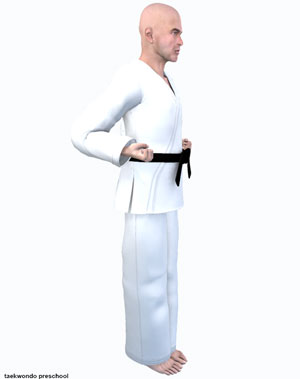
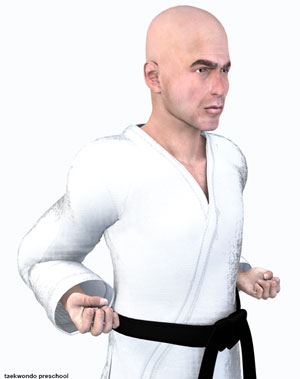

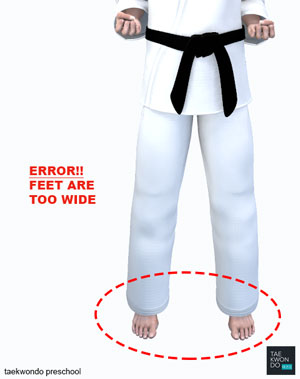
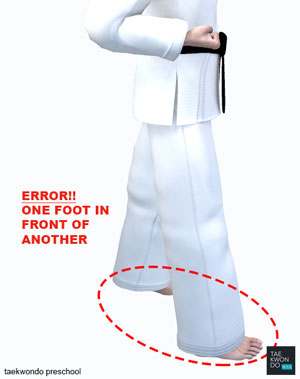
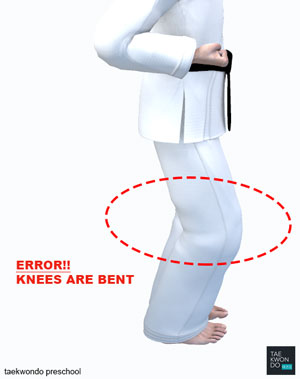
Additional Resources
Taekwondo Stances ( 서기 sogi )
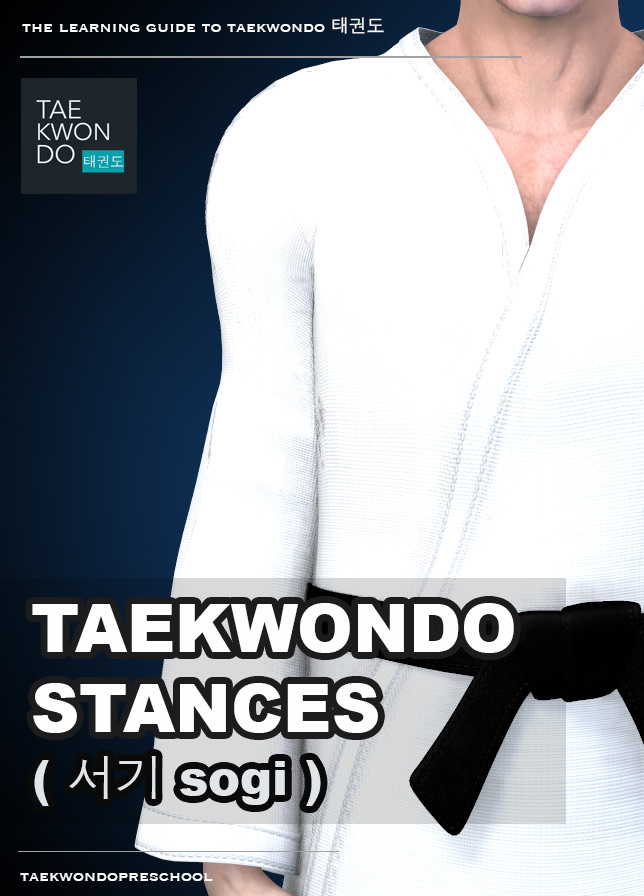
This book is available for download with Apple Books on your Mac or iOS device, and with iTunes on your computer. Book can be read with Apple Books on your Mac or iOS device.
The Korean martial arts taekwondo has several stances ( 서기 sogi ) used for different activities. Although there are strong similarities in stances ( 서기 sogi ) throughout taekwondo schools, individual instructors often have their own preferred style. These stances ( 서기 sogi ) are most commonly seen in taekwondo forms ( 품새 poomse ), and are critical for balance, precision, and good technique in the martial art.
View more information about Book »
TAEKWONDO STANCES ( 서기 sogi ) |
|||||
| Hangul 한글 | Korean | Belt Requirement | Difficulty Level | Tutorial | |
| Attention Stance | 차렷 | charyeot |   |
Beginner Level | Tutorial » |
| Ready Stance | 기본준비 | junbi |   |
Beginner Level | Tutorial » |
| Front Stance | 앞굽이 | ap-kubi |   |
Beginner Level | Tutorial » |
| Horse Riding Stance | 주춤서기 | juchum-sogi |   |
Beginner Level | Tutorial » |
| Two Fist Ready Posture | 두주먹허리준비 | dujumeok-heori-junbi |   |
Beginner Level | Tutorial » |
| Fighting Stance | 겨루기준비 | gyeorugi-junbi |    |
Beginner Level | Tutorial » |
| Walking Stance | 앞서기 | ap-sogi |   |
Beginner Level | Tutorial » |
| Parallel Stance | 나란히서기 | naranhi-sogi |   |
Beginner Level | Tutorial » |
| Inward Stance | 안쫑서기 | anjjong-sogi |   |
Beginner Level | Tutorial » |
| At Ease Stance | 편히서기 | pyeoni-sogi |   |
Beginner Level | Tutorial » |
| Back Stance | 뒷굽이 | dwi-kubi |    |
Intermediate Level | Tutorial » |
| Side Stance | 옆서기 | yeop-sogi |  |
Intermediate Level | |
| Left Stance ”L” Shape | 왼 서기 | wen-sogi |  |
Intermediate Level | Tutorial » |
| Right Stance ”L” Shape | 오른 서기 | oreun-sogi |  |
Intermediate Level | Tutorial » |
| Cross Stance | 꼬아서기 | koa-sogi |   |
Intermediate Level | |
| Rear Cross Stance | 뒤 꼬아서기 | dwi-koa-sogi |   |
Intermediate Level | Tutorial » |
| Covered Fist Posture | 보주먹준비 | bojumeok-junbi |  |
Intermediate Level | Tutorial » |
| Tiger / Cat Stance | 범서기 | beom-sogi |   |
Intermediate Level | Tutorial » |
| Forward Cross Stance | 앞 꼬아서기 | ap-koa-sogi |   |
Intermediate Level | Tutorial » |
| ‘ㅗ’ Shape Stance | ‘ㅗ’ 자 서기 | oja-sogi |   |
Advanced Level | |
| Log Pushing Hands Posture | 통밀기준비 | tongmilgi-junbi |   |
Advanced Level | Tutorial » |
| Crane Stance | 학다리서기 | hakdari-sogi |  |
Advanced Level | Tutorial » |
| Overlapped-Hand Posture | 겹손준비 | gyeopson-junbi |  |
Advanced Level | Tutorial » |
| Inner Knee Stance | 오금서기 | ogum-sogi |  |
Advanced Level | Tutorial » |
| Assisting Stance | 곁다리서기 | gyeotdari-sogi |  |
Advanced Level | Tutorial » |
Advertisement

Quiz
Question. In what year was Kukkiwon ( 국기원 ) being officially named on?
Kukkiwon ( 국기원 ), also known as World Taekwondo Headquarters, and home of the World Taekwondo Academy, is the official taekwondo governing organization established by the South Korean government. It is supervised by the International Sports Division of the Ministry of Culture, Sports, and Tourism. Kukkiwon is based at 635 Yeoksam-dong ( 역삼동 ) in the Gangnam-gu ( 강남구 ) district of Seoul, South Korea.
Question. In what year was Kukkiwon ( 국기원 ) being officially named on?
Answer you gave was: 1971
Your answer is wrong! You need to study more!

The organization being officially named on 6 February 1973. Known as World Taekwondo Headquarters, is the official taekwondo governing organization established by the South Korean government. Although the terms "WT" and "Kukkiwon" are often mistakenly used interchangeably, the Kukkiwon is a completely different organization which trains and certifies instructors and issues official dan and poom certificates worldwide.
View Kukkiwon ( 국기원 ) » 
Question. In what year was Kukkiwon ( 국기원 ) being officially named on?
Answer you gave was: 1973
Your answer is correct! Great Job!

The organization being officially named on 6 February 1973. Known as World Taekwondo Headquarters, is the official taekwondo governing organization established by the South Korean government. Although the terms "WT" and "Kukkiwon" are often mistakenly used interchangeably, the Kukkiwon is a completely different organization which trains and certifies instructors and issues official dan and poom certificates worldwide.
View Kukkiwon ( 국기원 ) » 
Question. In what year was Kukkiwon ( 국기원 ) being officially named on?
Answer you gave was: 1975
Your answer is wrong! You need to study more!

The organization being officially named on 6 February 1973. Known as World Taekwondo Headquarters, is the official taekwondo governing organization established by the South Korean government. Although the terms "WT" and "Kukkiwon" are often mistakenly used interchangeably, the Kukkiwon is a completely different organization which trains and certifies instructors and issues official dan and poom certificates worldwide.
View Kukkiwon ( 국기원 ) » 
Question. In what year was Kukkiwon ( 국기원 ) being officially named on?
Answer you gave was: 1977
Your answer is wrong! You need to study more!

The organization being officially named on 6 February 1973. Known as World Taekwondo Headquarters, is the official taekwondo governing organization established by the South Korean government. Although the terms "WT" and "Kukkiwon" are often mistakenly used interchangeably, the Kukkiwon is a completely different organization which trains and certifies instructors and issues official dan and poom certificates worldwide.
View Kukkiwon ( 국기원 ) » 
Question. What is the name of Taegeuk #5 in Korean?
Taegeuk 태극 (in World Taekwondo (WT)) refers to a set of poomse 품새 used to create a foundation for the teaching of taekwondo. A poomse or form is a detailed pattern of defense-and-attack motions and techniques used in traditional martial arts. Each taegeuk form symbolizes a specific state thought to be indicative of the belt the student currently holds, and is represented in World Taekwondo (WT) by trigrams similar to those found in the four corners of the South Korean flag.
Question. What is the name of Taegeuk #5 in Korean?
Answer you gave was: Sam Jang
Your answer is wrong! You need to study more!


This trigram represents Fire. Related to this symbol is also East and the relationship of the Second Daughter. Fire contains a lot of energy. The symbol behind the fire is similar to the symbolism of the water in that both can aid and both can destroy. This form is intended to be performed rhythmically, with some outbursts of energy to reflect fire's rhythmic and energetic dualism.
Question. What is the name of Taegeuk #5 in Korean?
Answer you gave was: Yi Jang
Your answer is wrong! You need to study more!


The associated trigram of this poomse represents the Lake. Also, related to the symbol is South East and the relationship of the youngest daughter. The movements of this Taegeuk are aimed to be performed believing that man has limitations, but that we can overcome these limitations. The Lake and its water symbolize the flowing and calm nature of the martial artist.
Question. What is the name of Taegeuk #5 in Korean?
Answer you gave was: Yuk Jang
Your answer is wrong! You need to study more!


The trigram associated with this poomse represents Water. Also, there is a relation to West and the relationship with a Second son. The movements of this poomse are intended to be performed like water; flowing, powerful and cleansing. Sometimes standing still like water in a lake, sometimes thriving as a river, sometimes powerful like a waterfall.
Question. What is the name of Taegeuk #5 in Korean?
Answer you gave was: O Jang
Your answer is correct! Great Job!


The trigram associated with this poomse represents Wind. The trigram is also related to southwest and the relationship with an eldest daughter. The I Ching promotes that wind is a gentle force, but can sometimes be furious, destroying everything in its path. As such, it is intended that this poomse is performed like the wind: gently, but knowing the ability of mass destruction with a single movement.
Question. What is the korean terminology for Kicking?
A kick is a physical strike using the foot, leg, or knee. As the human leg is longer and stronger than the arm, kicks are generally used to keep an opponent at a distance, surprise him or her with their range, and inflict substantial damage. All kicks can be executed as jump kicks, spin kicks, jump spin kicks or multi-rotational spin kicks. Also, all can be performed by the front or rear leg in a given stance.
Question. What is the korean terminology for kicking?
Answer you gave was: ( 차기 chagi )
Your answer is correct! Great Job!


Kicking ( 차기 chagi ) is a physical strike using the foot ( 발 bal ), leg, or knee ( 무릎 mureup ). As the human leg is longer and stronger than the arm ( 팔 pal ), kicks ( 차기 chagi ) are generally used to keep an opponent at a distance, surprise him or her with their range, and inflict substantial damage. Any attempt to deliver a kick ( 차기 chagi ) will necessarily compromise one's stability of stance ( 서기 sogi ).
Question. What is the korean terminology for kicking?
Answer you gave was: ( 서기 sogi )
Your answer is wrong! You need to study more!


The Korean martial arts has several Stances ( 서기 sogi ) used for different activities. Although there are strong similarities in stances throughout taekwondo schools, individual instructors often have their own preferred style. These stances are most commonly seen in taekwondo forms, and are critical for balance, precision, and good technique in the martial art.
Question. What is the korean terminology for kicking?
Answer you gave was: ( 막기 makgi )
Your answer is wrong! You need to study more!


In martial arts, blocking ( 막기 makgi ) is the act of stopping or deflecting an opponent's attack for the purpose of preventing injurious contact with the body. A block ( 막기 makgi ) usually consists of placing a limb across the line of the attack. Blocks ( 막기 makgi ) are considered by some to be the most direct and least subtle of defensive techniques.
Question. What is the korean terminology for kicking?
Answer you gave was: ( 치기 chigi )
Your answer is wrong! You need to study more!


Taekwondo Strikes ( 치기 chigi ) are performed as a close distance alternative to kicks. Hand strikes make up fast combinations of strikes which can leave an opponent stunned and unable to defend himself. Striking ( 치기 chigi ) are taekwondo techniques striking with the twisting force of the body excluding techniques using the fist ( 주먹 jumeok ) or fingertips ( 손끝 sonkkeut ).


Related Articles
The korean martial arts taekwondo has several stances ( 서기 sogi ) used for different activities. Practitioners must have their body weight correctly distributed during each different stance and during footwork. Each technique must be correctly aligned. Although there are strong similarities in stances throughout taekwondo schools, individual instructors often have their own preferred style. For information View Taekwondo Stances ( 서기 sogi ) »
- Ready Stance ( 기본준비 junbi )
- Walking Stance ( 앞서기 ap-sogi )
- Front Stance ( 앞굽이 ap-kubi )
- Attention Stance ( 차렷 charyeot )
- Fighting Stance ( 겨루기준비 gyeorugi-junbi )
- Parallel Stance ( 나란히서기 naranhi-sogi )
- Horse Stance ( 주춤서기 juchum-sogi )
- Back Stance ( 뒷굽이 dwi-kubi )
- Covered Fist Ready Stance ( 보주먹준비 bojumeok-junbi )
- Log Pushing Posture ( 통밀기준비 tongmilgi-junbi )
- Overlapping Hand Posture ( 겹손준비 gyeopson-junbi )
- Assisted Stance ( 곁다리서기 gyeotdari-sogi )
- Inward Stance ( 안쫑서기 anjjong-sogi )
- Left Side Stance ( 왼 서기 wen-sogi )
- Right Side Stance ( 오른 서기 oreun-sogi )
- Cat Stance ( 범서기 beom-sogi )
- Forward Cross Stance ( 앞 꼬아서기 ap-koa-sogi )
- Rear Cross Stance ( 뒤 꼬아서기 dwi-koa-sogi )
- Crane Stance ( 학다리서기 hakdari-sogi )
- Inner Knee Stance ( 오금서기 ogum-sogi )
- Two Fist Ready Stance ( 두주먹허리준비 dujumeok-heori-junbi )
- At Ease Stance ( 편히서기 pyeoni-sogi )
- Closed Stance ( 모아서기 moa-sogi )
- Forward Riding Stance ( 앞 주춤서기 ap-juchum-sogi )
There are five tenets defined in the International Taekwondo Federation (ITF) and several more in World Taekwondo (WT).
Courtesy ( Ye Ui / 예의 ): "Showing courtesy to all, respecting others, having manners as well as maintaining the appropriate etiquette at all times, both within and outside the dojang (도장) (designated training area)." View Taekwondo Tenets »
RESOURCES
This article uses material from the Wikipedia article "Taekwondo Stances", which is released under the Creative Commons Attribution-Share-Alike License 3.0.








